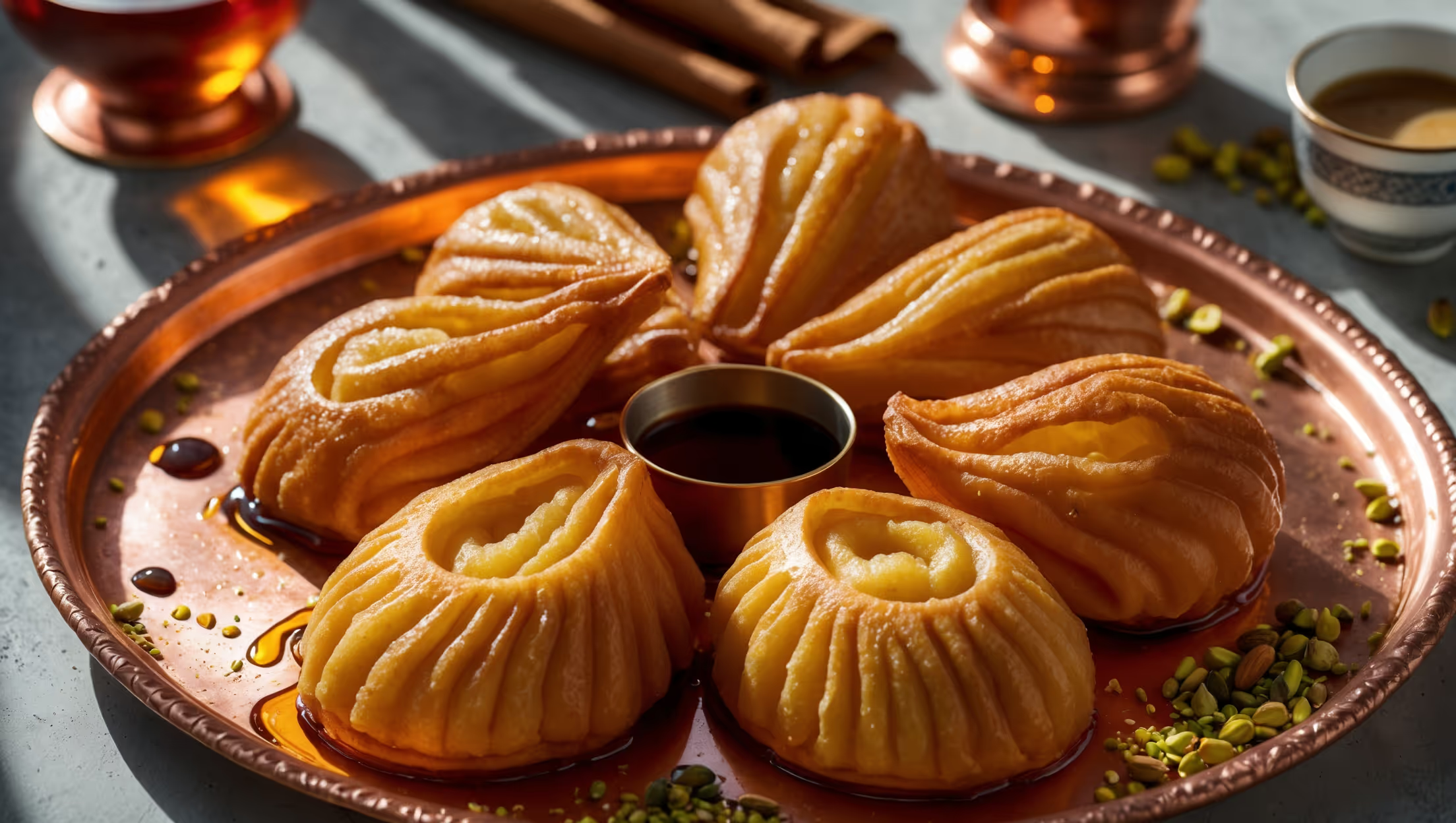Tulumba (Syrup-Soaked Fried Phyllo) Recipe

Ingredients
Equipment
Directions
FAQs
Find answers to your most pressing questions about this delicious recipe right here.
Traditional tulumba requires ingredients for both dough and syrup. The dough needs water, butter, flour, salt, sugar and eggs, while the syrup contains sugar, water, lemon juice and spices like cinnamon and cloves. Pistachios are often used as an optional garnish.
Learn how to cook Tulumba (Syrup-Soaked Fried Phyllo) by first preparing a cool syrup with sugar, water and spices. Then make a choux-like pastry, pipe it through a star tip directly into hot oil (175-180°C), and fry until golden brown. The critical final step is soaking the hot pastries in the cool syrup, which creates that distinctive crisp-yet-tender texture.
The star-shaped tip creates distinctive ridges that serve multiple purposes: they provide the characteristic tulumba appearance, increase surface area for better syrup absorption, and create texture variations with crispy edges. These ridges also help the pastry maintain its structure during frying.
The key is temperature contrast – frying the pastry at precisely 175-180°C until well-browned, then immediately soaking it in completely cooled syrup. This temperature difference allows the hot pastry to absorb syrup effectively while maintaining some exterior crispness.
Yes, you can make tulumba without a stand mixer by using a wooden spoon and considerable arm strength. After cooking the dough, vigorously beat in the eggs one at a time until fully incorporated. While more labour-intensive, this traditional method works perfectly well.
Filo Pastry
Try following recommended recipes









